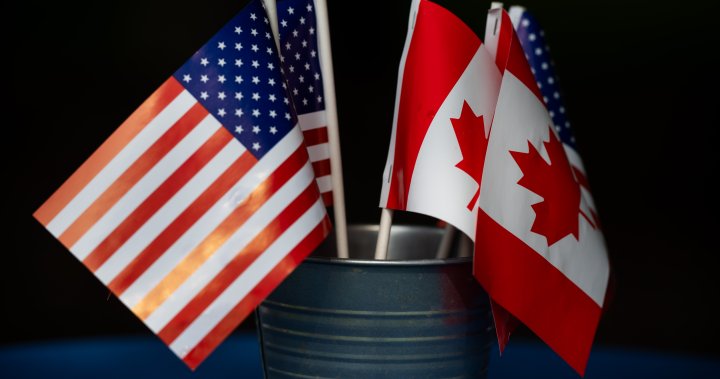The looming threat of tariffs imposed by the Trump administration on Canadian and Mexican goods hung heavy in the air as the deadline of Saturday approached. For weeks, President Trump had issued warnings to both countries, two of the United States’ largest trading partners, demanding action against fentanyl trafficking and the flow of migrants across the US border. Coupled with his complaints about trade deficits, despite security enhancements undertaken by both Canada and Mexico, Trump’s rhetoric pointed towards potential economic conflict. The uncertainty surrounding the tariffs extended to their scope and magnitude, with speculation ranging from a blanket 25% tariff on all exports to more targeted levies on specific sectors, potentially including Canadian oil and gas, a crucial export to the United States. Economists warned of the inflationary pressures that could result from such tariffs, particularly on everyday goods like fresh produce, where price increases could be felt almost immediately. The prospect of retaliatory tariffs from Canada further heightened the tension, adding another layer of complexity to the already fraught trade relationship.
Canada, bracing for the potential economic fallout, prepared for a “forceful but reasonable immediate response,” as promised by Prime Minister Justin Trudeau. On the eve of the potential tariff implementation, Trudeau convened with the Committee on Internal Trade, a body comprised of premiers and federal officials under the Canadian Free Trade Agreement. The meeting underscored the gravity of the situation, with Trudeau characterizing it as a “critical moment” following Trump’s reiterated threat of a 25% tariff on Canadian and Mexican goods. The Prime Minister’s firm stance emphasized Canada’s readiness to retaliate if the tariffs were imposed, demonstrating a resolve to protect its economic interests while seeking to maintain a balanced approach. The potential trade war posed a significant challenge to the long-standing economic partnership between the two countries, raising concerns about the impact on businesses and consumers on both sides of the border.
The underlying issues driving the tariff threats were multifaceted. Trump’s focus on fentanyl trafficking and illegal immigration reflected his administration’s prioritization of border security and domestic law enforcement. While Canada and Mexico had taken steps to address these concerns, they seemingly fell short of satisfying the US President’s demands. The trade deficit, another point of contention, further complicated the situation. Trump’s assertion that both Canada and Mexico benefited unfairly from their trade relationship with the US added fuel to the fire, despite the complex economic realities that contributed to trade imbalances. These interwoven factors created a volatile environment, where the threat of tariffs loomed large, casting a shadow over the future of North American trade relations.
The potential economic consequences of the threatened tariffs were significant. Experts warned of a ripple effect that could impact various sectors, from agriculture to energy. The inflationary pressures stemming from increased import costs could burden consumers with higher prices for everyday goods, potentially dampening consumer spending and economic growth. Businesses, particularly those reliant on cross-border trade, faced uncertainty and potential disruptions to their supply chains. The prospect of retaliatory tariffs from Canada added another layer of complexity, potentially escalating the trade dispute and further exacerbating the economic impact. The interwoven nature of the North American economies meant that any significant disruption to trade flows could have far-reaching consequences.
The standoff between the US and its North American neighbors highlighted the challenges of navigating trade relationships in a globalized world. The Trump administration’s emphasis on “America First” policies and its willingness to use tariffs as a negotiating tool created tensions with key trading partners. The threat to impose tariffs on Canada and Mexico, despite their close economic ties and long-standing partnerships, underscored the shifting dynamics of international trade. The potential for retaliatory tariffs further complicated the situation, raising the specter of a trade war that could harm all parties involved. The interconnectedness of the global economy meant that any significant disruption to trade could have far-reaching consequences, impacting businesses, consumers, and overall economic growth.
The uncertainty surrounding the potential tariffs created an atmosphere of apprehension for businesses and consumers alike. The prospect of higher prices for everyday goods, coupled with potential disruptions to supply chains, raised concerns about the economic outlook. The interwoven nature of the North American economies meant that any significant disruption to trade flows could have a ripple effect, impacting businesses, consumers, and overall economic growth. The looming deadline for the tariff implementation added to the sense of urgency, as businesses and governments prepared for various scenarios, hoping to mitigate the potential damage. The situation underscored the complex and often volatile nature of international trade relations, highlighting the challenges of balancing national interests with the need for cooperation and stability in the global economy.

